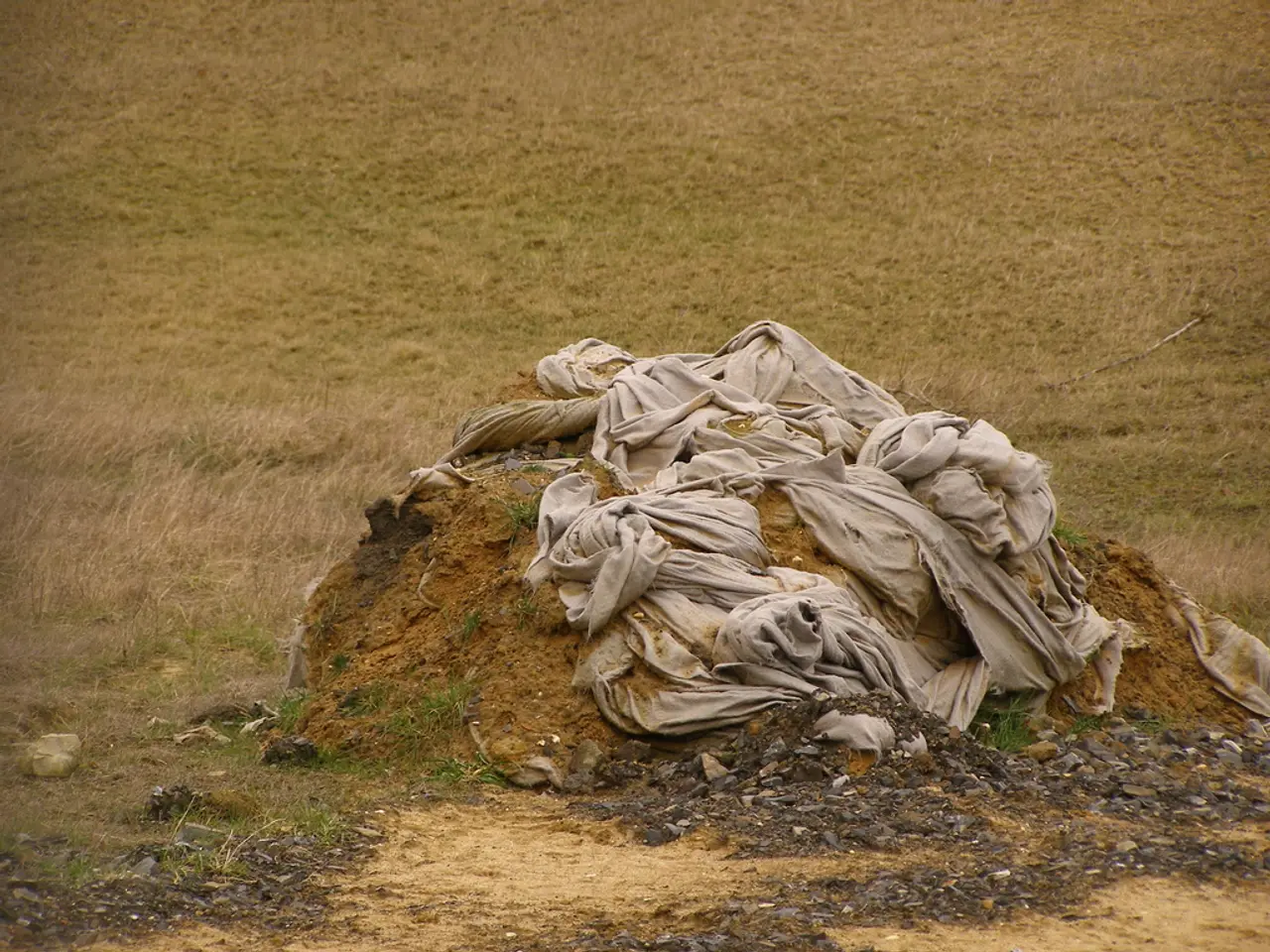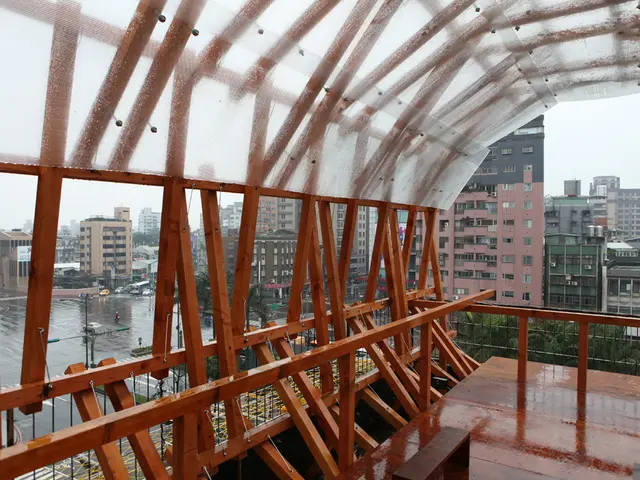Guide to Efficient Watering in Sandier Soils Below Ground Level
In the heart of the agricultural landscape, the Kansas State University Northwest Research-Extension Center has been utilising subsurface drip irrigation (SDI) systems since 1989, revolutionising crop production and water conservation in sandy loam soils.
Subsurface drip irrigation works by delivering water directly below the soil surface near the root zone. This approach optimises water usage and supports crop growth effectively in sandy loam soils, which have good drainage and moderate water holding capacity. The water is placed at a depth typically between 4 to 8 inches (10-20 cm), close to where plant roots are most active, reducing water loss through evaporation and runoff.
Key aspects of how SDI operates efficiently in sandy loam soils include the water placement depth, wetting pattern, flow rate, and emitter spacing. The drip tape is buried slightly shallower than in heavier loams to ensure water stays within the root zone. The wetting pattern forms an "onion-shaped" soil volume around the drip tape, ensuring moisture spreads laterally and vertically within the soil, providing uniform moisture availability to roots without oversaturating the soil or causing deep percolation losses.
The flow rate and emitter spacing are tailored to the soil’s infiltration capacity, which in sandy loam is moderate. A balanced emitter flow rate (e.g., 0.25-0.5 gallons per hour) combined with appropriate spacing minimises runoff and deep percolation, keeping water available at the root zone.
By directly delivering water subsurface, SDI greatly reduces evaporation compared to surface or overhead irrigation, making it especially beneficial in hot, dry conditions typical for many sandy loam regions. This means more water is available to crops, enhancing growth and potentially improving yields. Consistent moisture near roots prevents stress caused by dry spells, helping maintain steady growth and supporting high-quality growth.
In a study in Egypt, maize crops made more money with subsurface drip irrigation, with the semi-automatic method being especially profitable. In sandy soils, drip lines for subsurface irrigation are placed 6 to 24 inches deep, based on the soil and crop needs. Kent Lusk, a Kansas farmer, has seen significant improvements in crop yields and water savings with his subsurface drip irrigation system, including a 40% increase in yields and a drop in water usage from 3-4 acre-feet per acre to about 1 acre-foot.
New technologies are expected to make subsurface irrigation more water-efficient and sustainable, including the use of smart irrigation systems with sensors, internet-connected devices, and algorithms for precise control. Farmers using subsurface irrigation in sandy soils must find the perfect balance to water their crops efficiently without wasting water or harming the environment.
Installing subsurface drip irrigation costs between $2,000 and $3,200 per hectare, including about $800 USD per hectare for installation. Subsurface irrigation can significantly reduce water usage, minimise runoff and erosion, and enhance soil health, making it a valuable tool for sustainable agriculture.
In North Carolina, subsurface irrigation offers producers the potential to achieve similar or higher crop yields while using less water than other irrigation systems. Sandy soils can drain water quickly and don't hold it well, making water management a significant challenge when using subsurface irrigation in these soils. Regularly inspecting the subsurface irrigation system for leaks, clogs, or damage, and cleaning or flushing as needed, is crucial for maintaining the system's efficiency.
Subsurface drip irrigation (SDI) can help farmers grow more with less water, potentially saving a lot of money on water costs. In sandy soils, drip lines for subsurface irrigation are placed closer together due to the faster water movement in these soils. Proper maintenance and regular inspections are crucial to prevent clogging and ensure the system's continued efficiency.
Careful system design and component selection are essential for optimal performance and long-term sustainability of subsurface irrigation systems in sandy soils. A good filtration system, like Netafim's ApolloTM Disc-Kleen Automatic Filter, is essential for the longevity and efficiency of subsurface irrigation systems in sandy soils.
Subsurface irrigation uses buried tubes or tape to water plants directly at their roots, reducing evaporation and weeds, and improving soil moisture management. Subsurface irrigation is a highly efficient water delivery system that is well-suited for sandy soils due to their high water infiltration and drainage rates. Subsurface drip irrigation systems have been a part of irrigated agriculture since the 1960s, with rapid technological advancements in the last three decades.
Subsurface irrigation offers significant water conservation and crop yield benefits compared to traditional surface irrigation methods. A study showed a 27% increase in water efficiency with subsurface drip irrigation compared to surface drip irrigation. With its ability to conserve water, reduce runoff and erosion, and improve crop yields, subsurface drip irrigation is a valuable asset for farmers seeking sustainable and efficient agricultural practices.
- By utilizing the scientific approach of subsurface drip irrigation (SDI), soil health can be improved and water management optimized in sandy loam soils, benefiting crop growth.
- The efficiency of SDI in sandy loam soils is attributed to factors like water placement depth, wetting pattern, flow rate, and emitter spacing, each tailored to the soil's characteristics.
- The weather, especially in hot and dry conditions, poses a significant challenge for efficient water conservation, but SDI significantly reduces evaporation compared to surface or overhead irrigation, ensuring more crop-available water.
- Science and technology in environmental-science continually advance, with smart irrigation systems and sensors promising even better water conservation and soil health sustainability for subsurface drip irrigation users.








